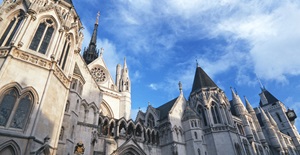Out-Law / Your Daily Need-To-Know
Out-Law News 2 min. read
Courts to put new focus on preparation of witness evidence
03 Mar 2021, 10:41 am
The introduction of new court rules setting out the procedure for preparing witness statements will help ensure that oral and written evidence presented to the English courts is consistent, say experts.
Practice Direction 57AC3 (84 page / 711KB PDF), governing trial witness statements before the Business and Property Courts, will come into effect on 6 April 2021. The practice direction sets out the necessary content of witness statements, and requires witness statements to be accompanied by a statement of truth, signed by the witness, and a certificate of compliance, signed by their legal representative.
The direction sets out the wording of the statement of truth and certificate of compliance, and states that parties must apply to dispense with or vary the form of both documents. The courts have a range of available sanctions against parties failing to comply with the practice direction, including striking out all or part of a trial witness statement, making an adverse costs order against the non-complying party, or ordering a witness to give some or all of their evidence in chief orally.
The issues addressed by the practice direction were raised in a recent High Court judgment in which the judge criticised the witness statement presented to the court.
Mrs Justice Moulder said evidence presented by a witness for Russian oil company Tatneft was not consistent with his written evidence, and that the witness had confirmed in cross examination that his witness statement was written by lawyers who had previously interviewed him for that purpose.
“This limits the value of that evidence not only because on occasion he appeared not to know what was in that statement but somewhat surprisingly, despite having expressly adopted the witness statements in evidence in chief, could not confirm that it represented his evidence,” the judge said.
Litigation expert Michael Fenn of Pinsent Masons, the law firm behind Out-Law, said the practice direction would help to address such issues.
“For some time, the judiciary has felt that trial witness statements are ‘over-lawyered’, and this is something which the new practice direction seeks to address,” Fenn said.
“In the recent case of Tatneft v Bogolyubov the judge made some fairly robust observations as regards the witness evidence of Tatneft. The judge did not accept that all oral evidence was consistent with written evidence, and some witness evidence was written by lawyers and not by the witness. The new practice direction will firmly place the emphasis on the trial witness statement being in the words of the witness, with the content based on their own unaided recollection of events,” Fenn said.
Litigation expert Stuart McNeill of Pinsent Masons said lawyers would need to take care that they were complying with the new rule.
“The certificate of compliance must be signed by whoever has responsibility for ensuring that the witness statement has been produced in accordance with the relevant rules. Who this might be has been the topic of discussion, as whoever signs it must have had good oversight of the drafting process,” McNeill said.
“This shouldn’t cause problems where only one person has drafted the statement, but could create issues where a statement has been drafted by a team of lawyers, or where, to save time and money, junior counsel or in-house counsel have prepared first drafts. This will require careful discussions between in-house counsel and external lawyers, as the external lawyer who signs the certificate of compliance will need to be satisfied that the first drafts complies with the practice direction and other relevant rules,” McNeill said.
The introduction of Practice Direction 57AC3 follows the work of a group led by Lord Justice Popplewell in 2018 and 2019 on witness statements, which proposed the introduction of a statement of compliance as well as strengthening the statement of truth provided by a witness.


